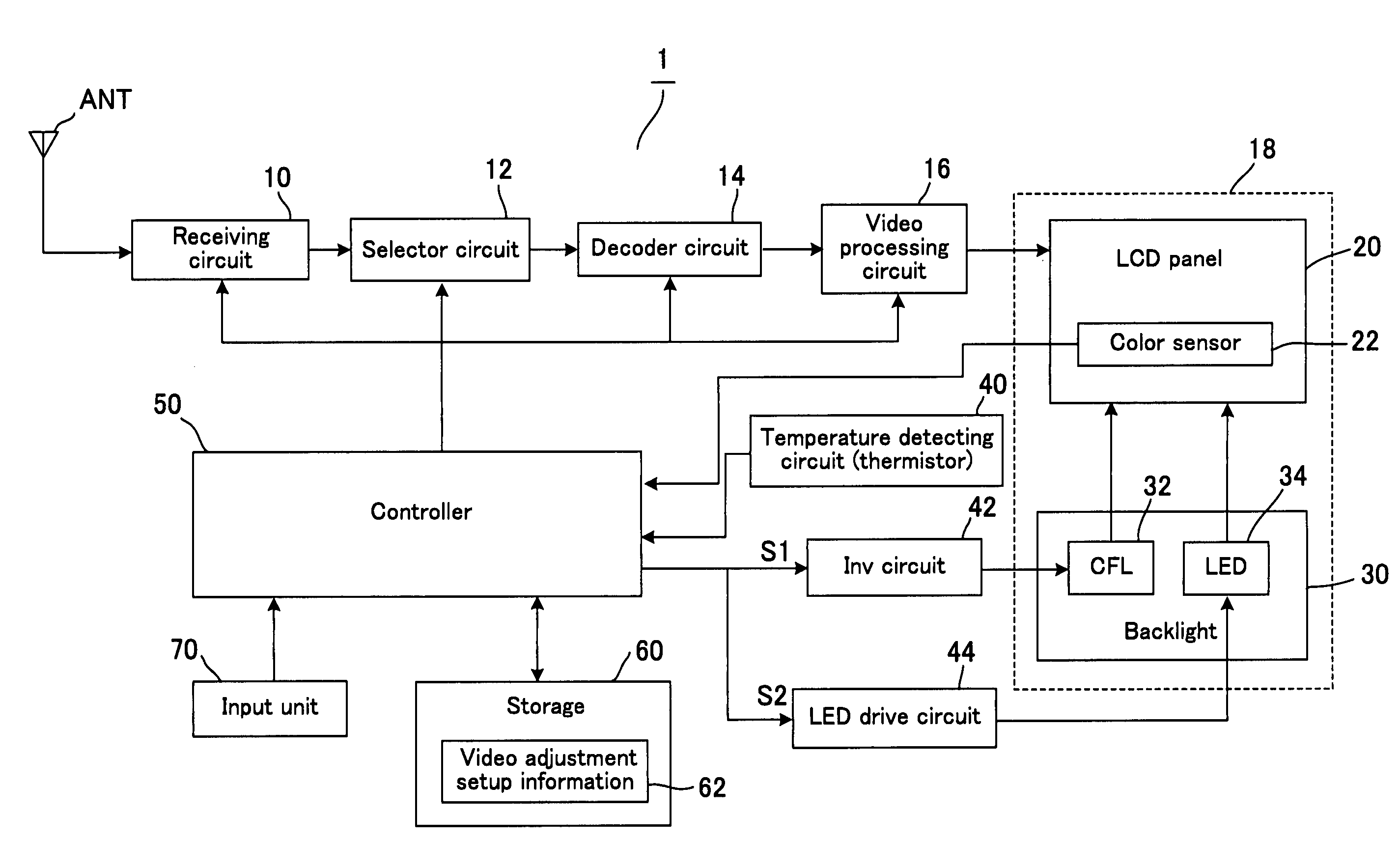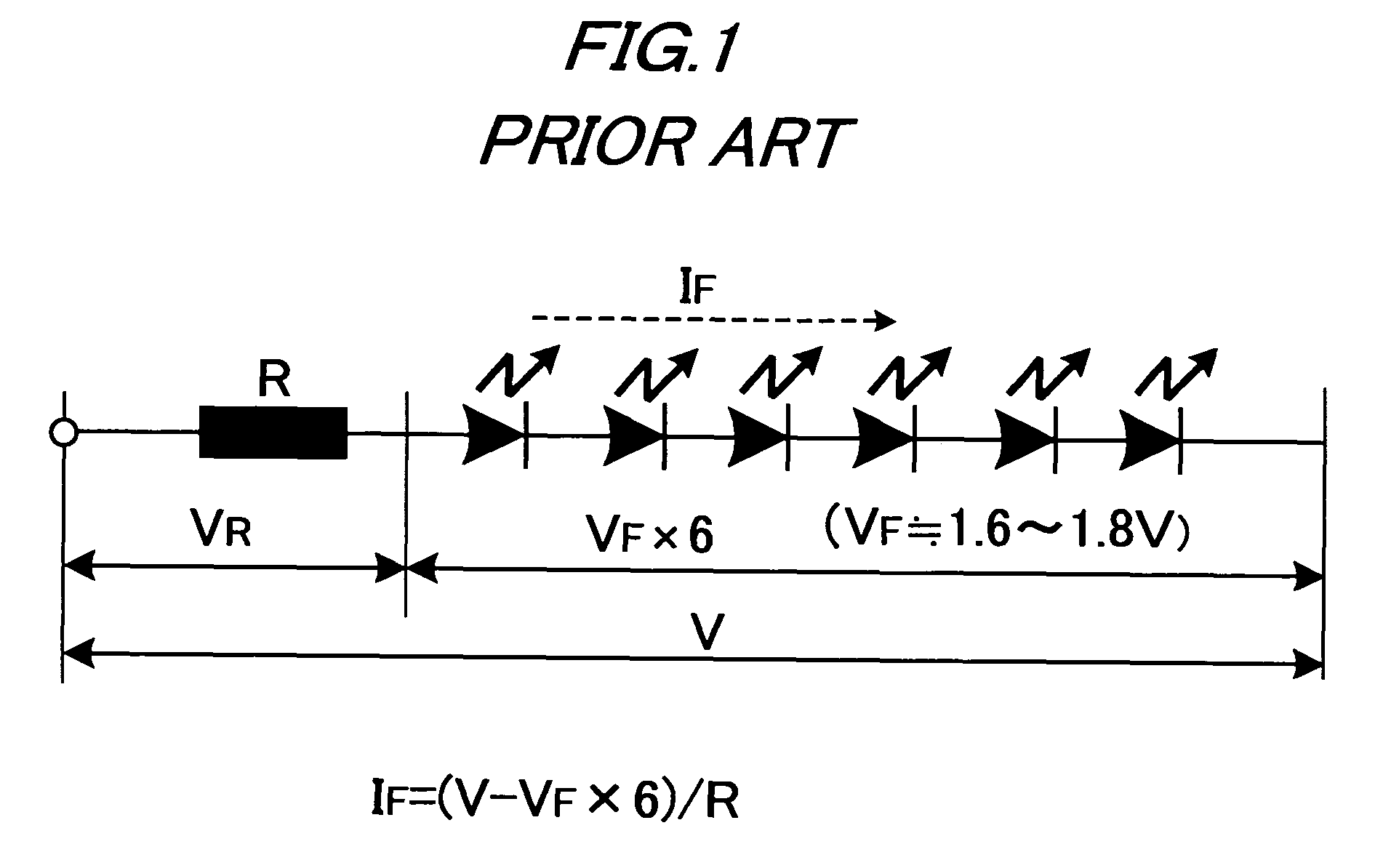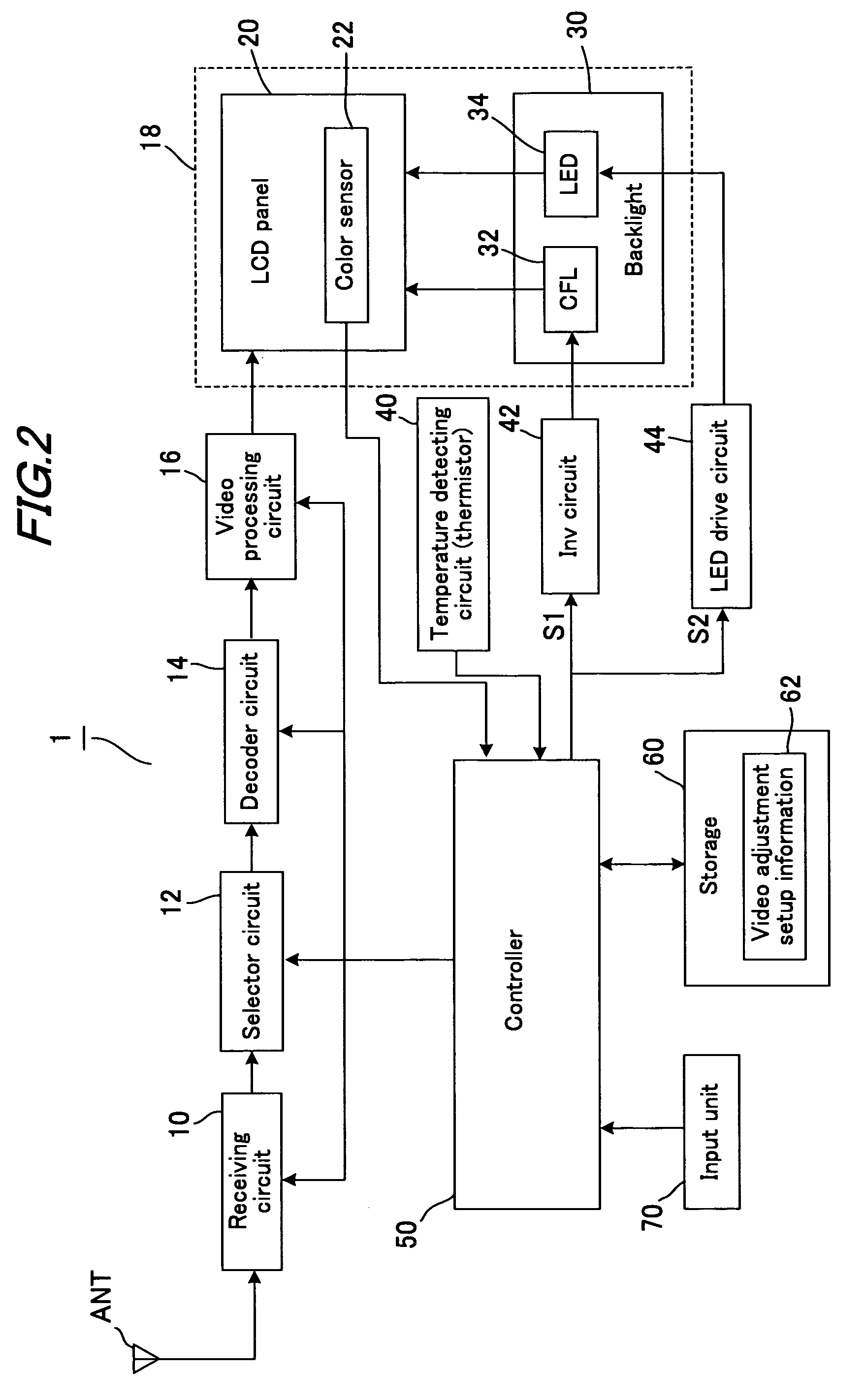Liquid crystal display device
a liquid crystal display and display device technology, applied in lighting devices, instruments, light sources, etc., can solve the problems of the inability to make corrections to one particular color alone, and the inability to adjust the light intensity of leds, etc., to achieve suitable brightness and large temperature-dependent variation
- Summary
- Abstract
- Description
- Claims
- Application Information
AI Technical Summary
Benefits of technology
Problems solved by technology
Method used
Image
Examples
Embodiment Construction
[0033]Now, the embodiment in which a liquid crystal display device of the present invention is applied to an LCD television will be described with reference to the drawings.
[Configuration]
[0034]FIG. 2 is a block diagram showing a configuration of an LCD television 1. LCD television 1 includes a receiving circuit 10, a selector circuit 12, a decoder circuit 14, a video processing circuit 16, an LCD 18, a temperature detecting circuit (thermistor) 40, an inverter (INV) circuit 42, an LED drive circuit 44, a controller 50, a storage 60 and an input unit 70, and has an external antenna ANT connected thereto.
[0035]LCD 18 is composed of an LCD panel 20 and a backlight 30, which are housed integrally. LCD 18 further includes a color sensor 22 that detects RGB values based on the light irradiated by the backlight for LCD panel 20. In addition, backlight 30 includes as its light sources a CFL module 32 and a LED module 34.
[0036]Receiving circuit 10 extracts broadcast signals from the receive...
PUM
 Login to View More
Login to View More Abstract
Description
Claims
Application Information
 Login to View More
Login to View More - R&D
- Intellectual Property
- Life Sciences
- Materials
- Tech Scout
- Unparalleled Data Quality
- Higher Quality Content
- 60% Fewer Hallucinations
Browse by: Latest US Patents, China's latest patents, Technical Efficacy Thesaurus, Application Domain, Technology Topic, Popular Technical Reports.
© 2025 PatSnap. All rights reserved.Legal|Privacy policy|Modern Slavery Act Transparency Statement|Sitemap|About US| Contact US: help@patsnap.com



